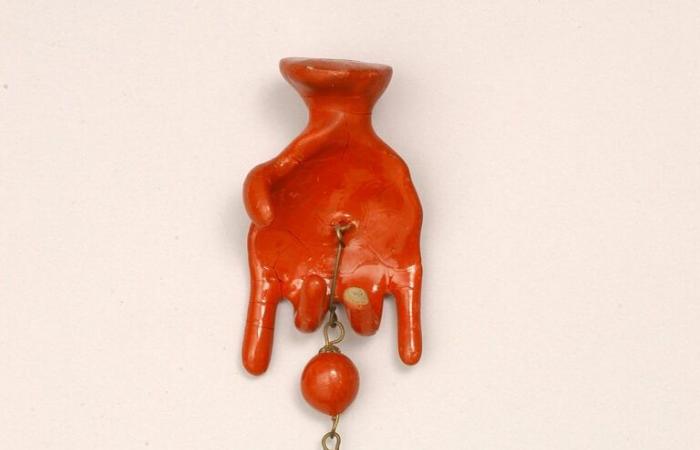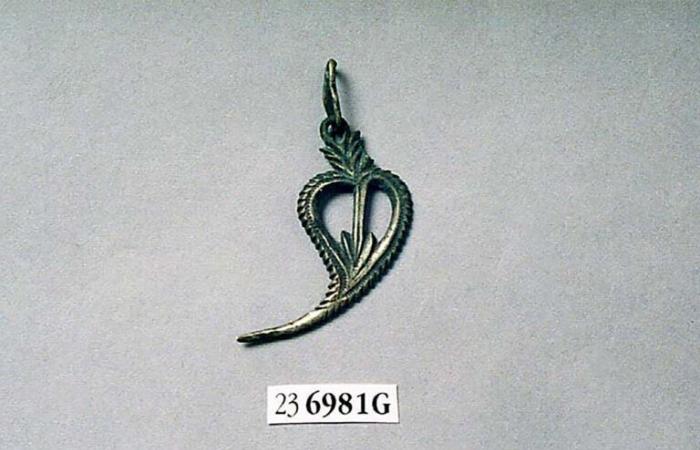In the National Archaeological Museum of Umbria a large quantity of magical amulets are exhibited, mostly of an archaeological nature, coming from all over the national territory. This nucleus was put together between the 19th and 20th centuries by Giuseppe Bellucci, eclectic collector of archaeological and ethnoanthropological objects. The collection, which boasts the distinction of being the most important in Italy and one of the largest and most prestigious in the world, represents a heritage of inestimable historical and cultural value. We had the opportunity to delve deeper into this extraordinary heritage together with the Director of MANU, Doctor Tiziana Caponi.
Interview with Tiziana Caponi, Director of the MANU of Perugia
Who was Giuseppe Bellucci and how does he put this collection together?
Giuseppe Bellucci (Perugia, 1844-1921) was a very important scholar from Perugia. He trained as a naturalist and taught chemistry at the University of Perugia, also holding the role of Rector. He amassed an extraordinary collection of archaeological, ethnographic and anthropological finds. The objects were brought together between the second half of the nineteenth century and the beginning of the twentieth century through excavations, accidental discoveries and purchases.
The article continues below
What does this collection consist of?
His incredible “Collection of Italian Antiquities”, which included prehistoric, protohistoric and partly Etruscan-Roman materials, became the fundamental nucleus of the Etruscan-Roman Museum, later known as the Prehistoric Museum of Perugia. Together with the numerous scientific publications, the Museum acquired the inventories drawn up by Bellucci and his collaborators, which contained not only a brief description of the objects, but also their provenance, an uncommon fact among collectors of the time.
Bellucci’s collection of amulets
In particular, how was the collection of amulets composed?
As regards the collection of amulets, the most important in Italy, it consists of approximately 3500 pieces. In putting it together, Bellucci was able to combine his scientific and demographic interests, carefully collecting many elements to which a magical value was attributed by those who collected or created them. Among those that most aroused his curiosity were the talismans made from prehistoric stone tools, with particular attention to arrowheads and blades. The collection of amulets was studied overall by Giancarlo Baronti, professor of anthropological disciplines at the University of Perugia, who oversaw its current display within the museum.
Why this particular attention to arrowheads and blades?
During his investigations, Bellucci discovered that in popular beliefs the dynamics of electrocution identified two types: lightning, which fell in a straight line without hitting people directly, but incinerating them only by touching them, and the lightning bolt, which fell in a zigzag, being able to injure people, animals and destroy buildings. This distinction was reflected in amulets, associating the thunderbolt with the polished Neolithic axes and the thunderbolt with flint tips.
How can the materials of which the collection of amulets is made up be identified?
Some amulets are ancient medicines, others are residues linked to ancient medical practices, which were already considered superstitious at Bellucci’s time.
Amulets are objects that completely depend on the cultural models that produced them. The term amulet indicates any artefact to which a protective and propitiatory magical power is attributed. They are widespread in all contexts, the associative mechanisms vary. The aspects that allow an object to be linked to a specific aspect of the human condition fall into two types: similarity-substitution (e.g. animal teeth for teething); contiguity-concatenation (e.g. lightning stone because it is part of the lightning), similar to the theories of language. They can refer to moments of passage of existence, or pertaining to a purely magical sphere. This is the case of those that refer to witches, with evil eyes and craftsmanship, to the nature of objects, as in the case of coral, or those that refer to saints, not infrequently called “in question” in relation to situations that jeopardized the life.
1 / 6
 2 / 6
2 / 6
 3 / 6
3 / 6
 4 / 6
4 / 6
 5 / 6
5 / 6
 6 / 6
6 / 6
Amulets and rituals in the collections of the MANU of Perugia
What are the characteristics of the amulets that were supposed to protect people from atmospheric conditions?
We must first of all consider that among the factors that cause the most damage to humans are lightning and hail. Within our collection there are many bells, which had to be suspended around children’s necks. These, with their tinkling, had the task of averting the risk of hail after storms. The opposite problem is represented by prolonged periods of drought. Therefore, to encourage rain, amulets that had the features of skulls were used.
Are there amulets linked to rituals of particular interest?
The “mistress’s money” comes to mind, a holed coin given by the godmother at baptism to prevent regurgitation in newborns, and other amulets such as small keys or coins of the Holy Spirit, used against infantile convulsions. Particularly interesting is the “cimaruta”, an ancient amulet widespread in the Neapolitan area of the eighteenth century. This talisman derives from the custom of having children wear sprigs of rue against childhood worms and the evil eye. Neapolitan goldsmiths re-proposed many of these symbols against the evil eye and diseases.
The exhibitions of the MANU of Perugia
In addition to the permanent exhibition within the museum structure, are there any exhibitions with materials from the collection?
Yes, we currently have an exhibition set up at the Giovanni Lilliu Center – Barumini (SU) 3 February – 20 June 2024, entitled The Magic of Amulets. Umbria and Sardinia near or far? Collecting and archaeology, organized by the Barumini Sistema Cultura Foundation in collaboration with the National Archaeological Museum of Umbria and the Archaeological Superintendence of Fine Arts and Landscape for the metropolitan city of Cagliari and the Provinces of Oristano and Southern Sardinia, curated by Andreina Ghiani and Caterina Lilliu, with the scientific coordination of myself and Caterina Lilliu and the scientific consultancy of Gianfranca Salis, Dorica Manconi and Fulvia Lo Schiavo. An exhibition strongly supported by Dorica Manconi, who recently passed away, to whom we owe in particular the insights into Sardinian amulets
Everyone’s human affairs are marked by continuous transition phases, illnesses and needs. In reference to this exhibition, which Sardinian amulets help to illustrate these complex moments?
They refer to the affective sphere Sprugadentes of silver, while the blessed palm rings sanctioned the engagement. Pregnancy was favored by the aquiline stone, while childbirth by the Cyprea shell and the seal belt. To counteract the evil eye and envy, amulets such as mouflon horns, urchin jaws, coral horns, pig tusks and crustacean claws were used. After the First World War, amulets were added to protect the fighters, such as pontifical coins and strips of cloth with medals and holy cards. For therapeutic purposes, shark teeth and snake eye were used as antiophidics. Against diseases, owl feathers, male keys, fish teeth, mantis chrysalises, dog hair, mammal bones, madreporites and metal rings were used. Bearings prolonged existence. For animal health, witch stones, enameled amphorae with holy water, pig tusks, fossil echins, hematite, lightning stones and fossil wood were used. A bone fork protected from predators, while a Roman denarius from 64 BC increased the speed of horses.
Gabriele Passeri
Artribune is also on Whatsapp. Simply click here to subscribe to the channel and always be updated











